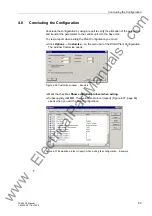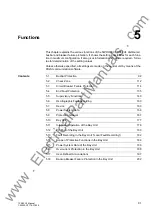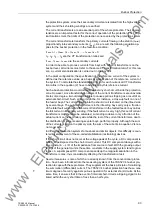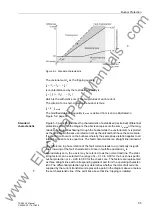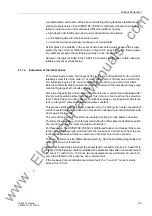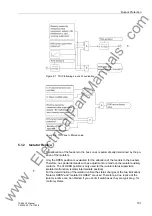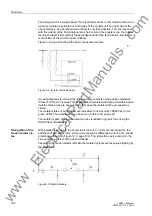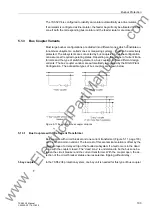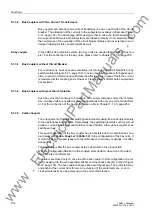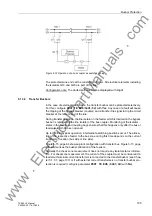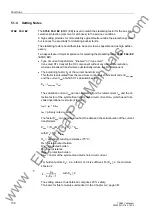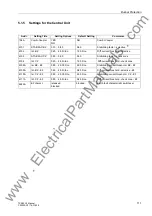
Functions
96
7SS52 V4 Manual
C53000-G1176-C182-3
Earth fault charac-
teristic
For the detection of high-resistance earth faults, tripping characteristics with increased
sensitivity are provided for the selective protection zones, the check zone and circuit
breaker failure. These more sensitive characteristics have their own parameters. The
stabilizing factor is identical with the normal load line.
The marshallable binary input "
>EF charact.
” (
) in the central unit
allows to switch over between the characteristics.
Figure 5-4 Earth fault characteristic
5.1.1.3
Separate Evaluation of Half-Cycles
At the instant a short-circuit occurs, the current is usually not symmetrical about the
zero line. The peak values of the two half cycles differ to an extent which depends on
the time instant on the cycle when the short-circuit began
.
The short-circuit current
contains a DC component which decays according to the function e
−
t/
τ
. Time con-
stants
τ
of approximately 64 ms are frequently encountered in high-voltage systems.
100 ms and more may be reached in the vicinity of large generators.
Such DC components make it substantially more difficult for the current transformers
to perform their function of transformation since such components increasingly polar-
ize the iron core.
Figure 5-5, page 98 illustrates the condition in the extreme case of an initially fully off-
set short-circuit current. An additional problem in this case is remanence of the current
transformer under consideration (remanence, for instance after an auto-reclosure),
which is presumed to be present in this case.
Figure 5-5, page 98 a) depicts the initially fully offset current. The DC component at
the beginning is equal to the peak value of the short-circuit AC current and decays at
the rate of
τ
=
64 ms. The current flows through the current transformer which, under
the conditions assumed to be present, would just be able to carry the AC current with-
out saturation if the AC current and thus the magnetic flux in the iron core were not
offset. However, on account of the superimposed DC component and the unfavorable
magnetic flux at the instant of short-circuit inception, the current transformer will be
saturated after about 6 ms. The magnetic flux cannot rise any more. The current trans-
former no longer delivers current on the secondary side. Only after the zero-crossing
of the current is transmission to the secondary side again possible on account of the
opposite current direction. After that, the currents shown in the figure below the axis
are correctly transformed. However, the current transformer is only able to transform
www
. ElectricalPartManuals
. com








